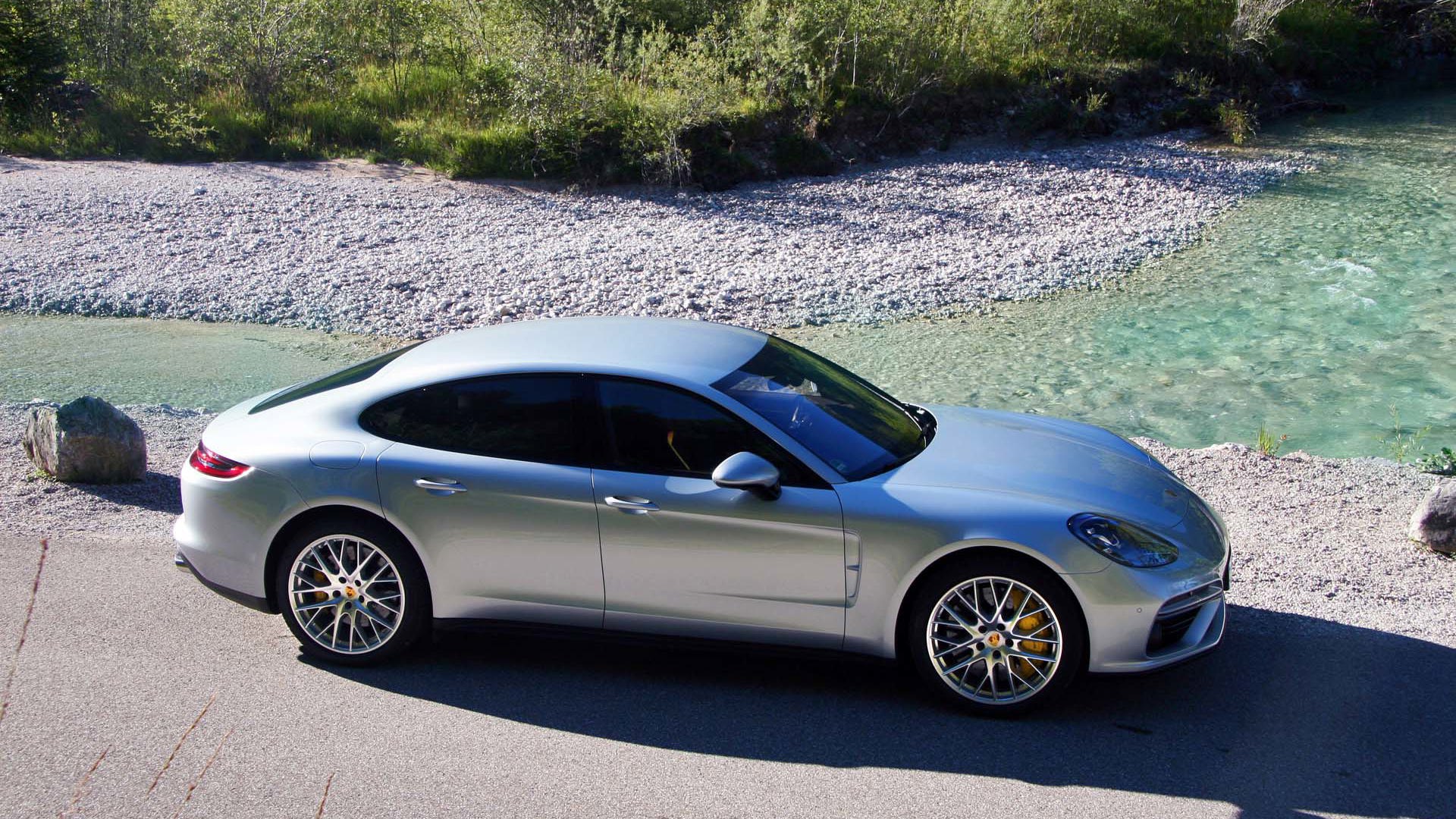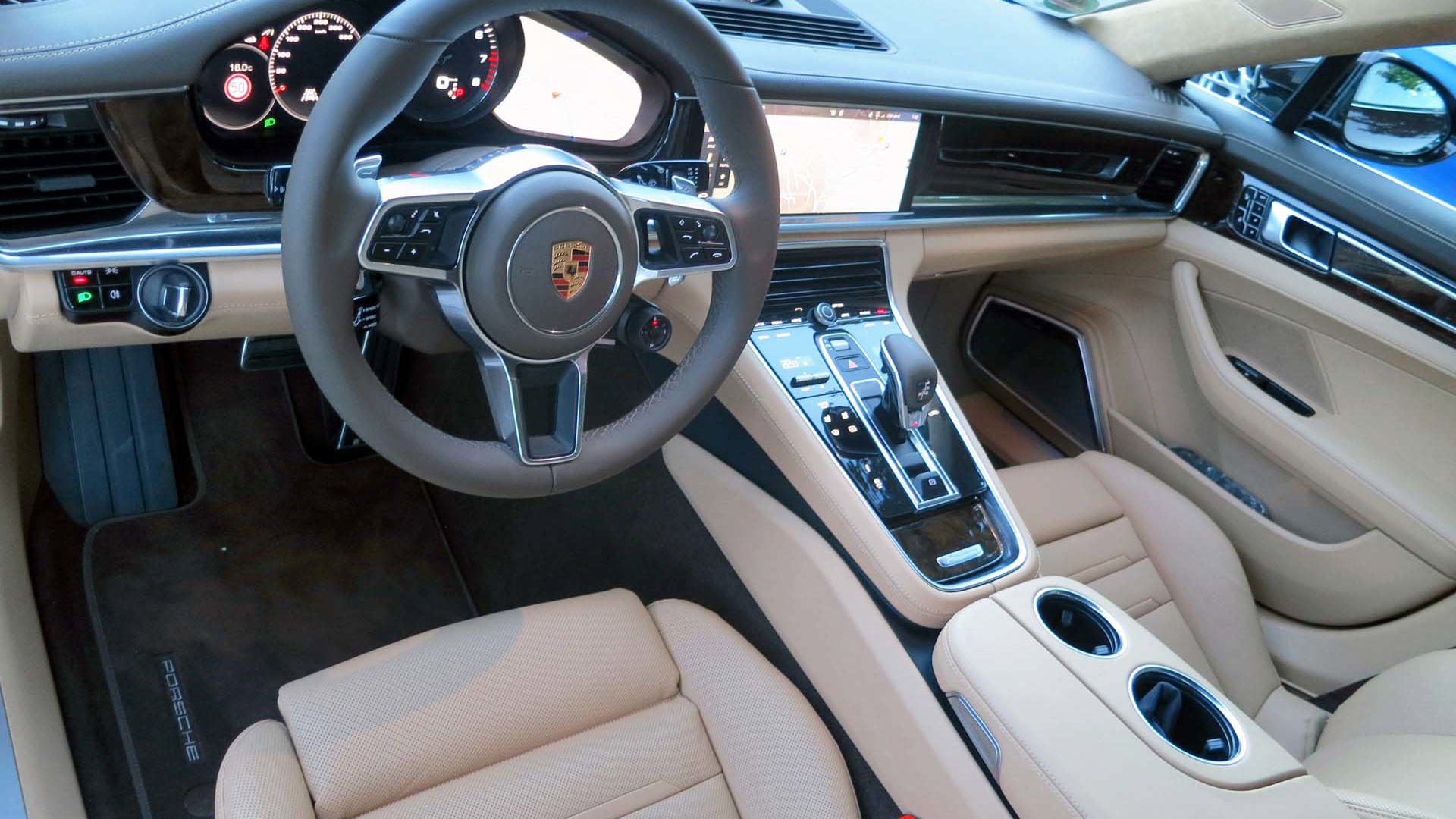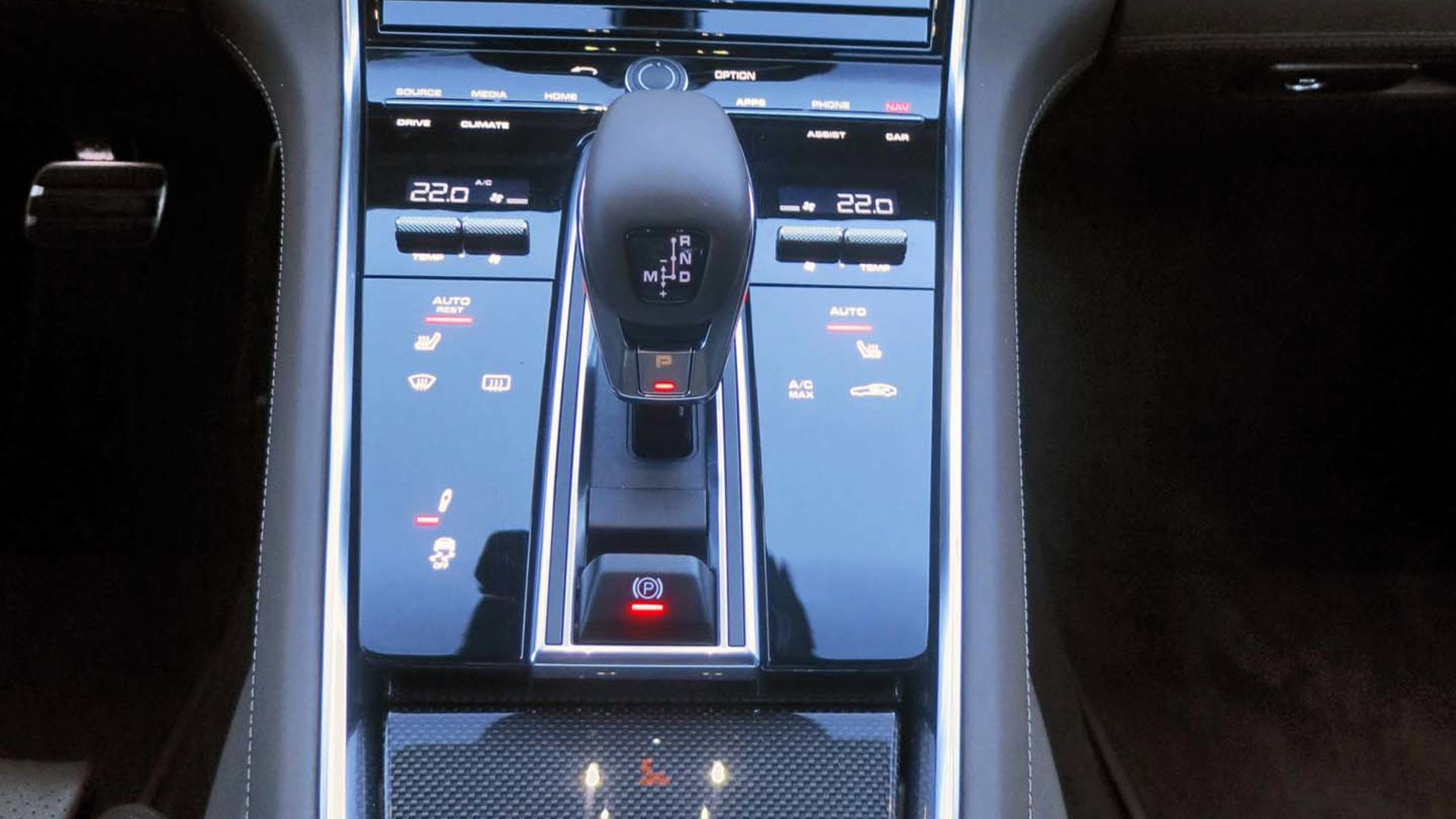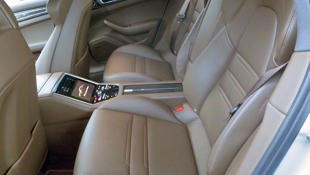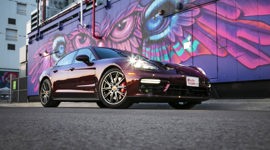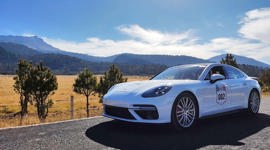TEGERNSEE, Germany – One minute we're rocketing down the Bundesautobahn 8, a 497 kilometre strip of pavement running west from Luxembourg to Austria, at nearly 230 km/h. The next we're rolling sedately down the Ausfahrt ramp and into the bucolic Bavarian countryside. That such a big car could be so readily hauled back to sensibility is largely thanks to the yellow callipers glimpsed between the spokes of its 20-inch wheels – signifying that this particular Panamera's blessed with the optional carbon-ceramic brake package. But it's also the result of a very well balanced chassis and suspension set-up that allowed this nearly-two-ton colossus to go from triple digits to a most-respectable 50 km/h in a matter of seconds, without any upset to its composure.
According to Dr. Gernot Döllner, VP of Panamera's product line, there are only three things that carry over from the old car: "the concept, the Panamera name and the Porsche crest."
The Porsche Panamera has been a paradox since its introduction in 2010. On one hand, it's one of their top-selling vehicles (third-best here in Canada) and helped Porsche to crack the lucrative luxury sedan segment. But not since the Cayenne SUV was unveiled has a new Porsche been the subject of so much vitriol from the brand's hardcore fans. Not only was it anathema to everything that Porsche stood for – heavy, two too many doors and a wrongly situated power plant – when viewed from certain angles, the Panamera was awkward and ungainly. The original Porsche 989 four-door prototype, on display at the Porsche museum in Stuttgart, somehow managed to retain the streamlined character of the 911. But the final production car, through necessity of competing in a segment that demands copious space and comfort above all, was not so svelte.
For 2017, the Panamera undergoes a complete ground-up do-over. According to Dr. Gernot Döllner, VP of Panamera's product line, there are only three things that carry over from the old car: "the concept, the Panamera name and the Porsche crest." And while still instantly recognizable as a Panamera, the reworked sheet metal, which is primarily aluminum, gives the new car a sleeker, sportier appearance. It's 34 mm longer, slightly wider, yet the roof's "flyline" has been lowered by 22 mm (nearly an inch). That may not sound like much, but the result is a more continuous, flowing topline that eradicates the previous car's biggest flaw: the bulbous, hunched hindquarters. Moving the cabin slightly more to the rear lengthens both the hood and the rear windows, further accentuating its similarities to the 911.
Deeper, more dramatic sculpting of the Panamera's flanks suggest speed and athleticism while visually slenderizing the side profile. While width increases only by 6mm, several design cues exaggerate the car's wider stance.
Deep Dive: 2017 Porsche Panamera
An LED light bar now connects the four-point, bas-relief taillights, making the haunches appear wider and more powerful. They're topped with a rear spoiler that's an interesting display of mechanical origami, automatically deploying at just over 100 km/h.
The reworked face includes an A-shaped air intake and horizontal cross-bar visually widening the grille. The longer, lower hood features a "power dome" with contoured lines continuing through the bumpers.
The cabin's 2+2 configuration carries over, and actually offers more room than the outgoing model, despite the lower roofline. Cargo space increases from 445 L to 495, and from 1262 to 1304 with the split 40/20/40 seats folded down. But even more important is the increase in sophistication. Across the industry, there's a heightened demand for new technology, and nowhere is it more important than in the premium segment. Safety features are expected as due course – but at this level the technology's got to dazzle. The previous Panamera fell far behind competitors like Audi, and their Virtual Cockpit's massive, high-resolution displays. Porsche's new "Advanced Cockpit" features two 7-inch displays within the instrumentation binnacle, and a 12.3-inch screen embedded in the centre console. There's an impressive on-board suite of safety features, including Night Vision, and "InnoDrive" adaptive cruise control, which uses navigation data to calculate optimum speed, braking and shift patterns three kilometres in advance.
Like the original, the new Panamera's cockpit is bisected, private jet-like, by a bank of switchgear. However, the swath of hard buttons has been replaced by a sleek, modern touch surface. While certainly a clean, uncluttered design, like most of its ilk, this sort of interface can be overly sensitive, and marks easily with fingerprints. The familiar aluminum gear selector has been replaced with one that's a little too similar in both style and function to BMW's much-maligned auto shifter.
We'll only be getting two models for now – the Panamera 4 S and Panamera Turbo – with a hybrid later to come. Europeans will also receive a diesel. The two engines, a 440 hp twin-turbo V6 and 550 hp twin-turbo V8, have been reworked for more power and better efficiency. Both come with the latest version of Porsche's eight-speed PDK transmission and both are all-wheel drive.
Most of the first day was spent in a Panamera 4S, fighting our way through Munich traffic, and eventually into narrow, meandering village roads. The 4S certainly had power enough over Bundestrasse and alpine roads. Outfitted with the optional Sport Package (which comes standard on the Turbo), the 4S was deliciously supple, quiet and comported itself well enough that you'd almost wonder why anyone would choose to spend an extra $50,000-plus for a Turbo.
However, the Turbo's V8 snarls to life with an urgency that makes the 4S seem laid-back by comparison. The Panamera's a luxury car, but it's a Porsche first and foremost with a performance legacy to uphold. Even those who've never considered the Panamera to be a real Porsche should be impressed with its blistering 7:38 lap time around the notorious Nürburgring – a class record only recently topped by the Alfa Romeo Guilia's 7:32.
It's almost frightening how effortlessly triple-digit speeds are achieved. It's not just the silken power delivery of its eye-watering 568 lb-ft of torque; the Turbo's a marvel of engineering technology, all of it working together to produce phenomenal composure and grip.
The adaptive air suspension system features the Porsche Active Suspension Management System (PASM), which monitors road conditions and continuously regulates each individual wheel according to the situation. A new three-chamber air spring now allows a greater range of flexibility depending on which drive mode is selected – choose "Sport Plus" and it's nearly track-day firm. The air suspension can also raise the chassis 20 mm for clearance, or lower it for track days up to 28 mm in front and 20mm behind to improve dynamics.
New rear-axle steering adds 2.8 degrees of angle adjustment to the rear wheels: turning opposite to the fronts at low speeds to reduce turning circles, and in the same direction at the front wheels over 50km/h to enhance stability and cornering ability at speed.
Porsche Dynamic Chassis Control adds a an electronically controlled rear differential lock for more traction while accelerating out of turns, and brake-generated torque vectoring (PTV) for more agile turn-in.
All these technologies are now governed by a central control system called "Integrated Porsche 4-D Chassis Control" which continually accumulates data and makes it available to the other chassis systems.
The upgraded steering now offers a decent amount of feedback and heft, which is crucial in a large car capable of such prodigious bursts of speed.
The result is a car that's supremely capable both on the straight and through the turns. In Sport Plus, the chassis firms and the Turbo S hunkers down on the road, yet the suspension remains supple enough to absorb rough tarmac with no jarring. Visibility down the long hood is excellent, and combined with its excellent grip, imparts the driver with a sense of confident well-being.
While it probably won't lure the die-hards away from their 911s, the Panamera is now the car it was always intended to be: a true, 4-door sports car.
Arriving in Canada in early 2017, the Panamera 4S starts at $114,300, and $167,700 for the Panamera Turbo.















